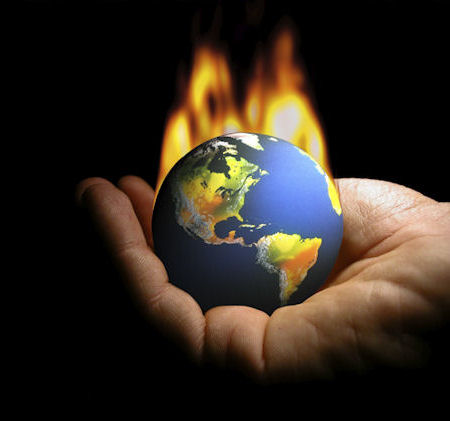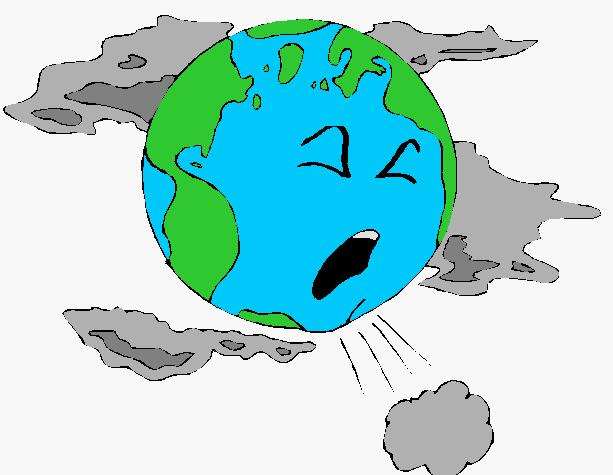In deciding what to write this blog post about, I found myself looking at notes from a course i took last semester called “Introduction to Environmental Studies”. The course, taught by proffessor Stephen Sharper, provided me with a brief but widely spread representation of many of the theories and treatments for our current environmental problem. Some of these theories shape the way we approach this dilema so i think it is important to keep these in the approach to any of the environmental problems we face. Out of the several theories we learned about, there was one that stuck the most. It is the one that i felt the closest connection to and the one i will speak to you about for the next little bit.
Out of everything i’ve learned and theories i’ve studied so far, my favorite is the Gaia theory. Originally developed by John Lovelock in the 70s, this theory was developed in an attempt to find ways to identify life in other planets. Working under NASA, Lovelock was assigned to come up with a series of life defining characteristics thatscientist could use to look for life in outer space. In this procces, Lovelock discovered we know alot about everything in life, but barely anything about life itself, what it is and how it forms.
Not too many scientist had set out to define life, but the ones that did all came to the same vague conclusion
Along with Dian Hitchcock, another scientist trying do discover the potential for life in o other planets, Lovelock realized that the main characteristics of what we call life are very clearly present in our own atmosphere.
That is, our planet is a living organism. The planet itself as well as the atmosphere around it is a self adjusting combination of gasses and other elements that is able to maintain the perfect conditions for all of the organism within it (all life on earth) to survive.
A good way to picture this is to imagine the word as a body. The body adjust to the environment it’s in to maintain conditions inside it at a stage where the organs can work to sustain the body itself. Without well functioning organs the body canot function properly and it begins to break down. Without a chemically balanced atmosphere or solid screen from the suns radiation, the earth begins to get sick.
This make make you wonder, what is our position in this body? If we continue to deteriorate the earth’s main organs – the oceans, ozone layer, etc – like we are, we will become like a parasite to the worldly body. We are sickening the earth in a way that it cannot maintain it’s conditions, something like a fever, if it’s not controlled, the body will eventually cease to function.
At it’s origin, the Gaia hypothesis was a huge mess of long scientific words that not alot of people understood or agreed with, however, like other useful theories, it has proven it’s theoretical value and it is now shaping the way leaders in environmental sustainability act. With the help of author William Golding, Lovelock was able to express his idea in a way we could all understand, and also changed the name from “the hypothesis that the biosphere is a self regulatory entity with capacity to keep our planet healthy by controlling the chemical and physical environment” to “Gaia” as we refer to it today, the ancient Greek word for Mother Earth.
Like any other theory going through criticism and development it has changed since it;s original form, in Lovelocks words;
“We have since defined Gaia as a complex entity involving the Earth’s biosphere, atmosphere, oceans, and soil; the totality constituting a feedback or cybernetic system which seeks an optimal physical and chemical environment for life on this planet. The maintenance of relatively constant conditions by active control may be conveniently described by the term ‘homoeostasis’.”
Since i first hear about Gaia last semester I’ve noticed how applicable the theory really is. Analyzing the world around me it seems very real to me that we are part of something bigger, however, our potential to destroy ti is bigger than ever. I think it is important to understand this in order to appreciate what we have a want to preserve it.
At last, i’d like to leave you with one last quote found at the end of the first chapter in “Gaia”. Mother nature is everything we rely on and we must change out view from the mean dominant special that must conquer all to one that understand we must accept and communicate with our surroundings in order to survive.
“If Gaia exists, the relationship between her and man, a dominant animal species in the complex living system, and the possibly shifting balance of power between them, are questions of obvious importance… The Gaia hypothesis is for those who like to walk or simply stand and stare, to wonder about the Earth and the life it bears, and to speculate about the consequences of our own presence here. It is an alternative to that pessimistic view which sees nature as a primitive force to be subdued and conquered. It is also an alternative to that equally depressing picture of our planet as a demented spaceship, forever travelling, driverless and purposeless, around an inner circle of the sun.”
For those interested in more information about the Gaia theory you can visit these sites:
This was the reading we had about Gaia in my Environmental class:
http://www.marxists.org/reference/subject/philosophy/works/us/gaia.htm
Also use:
http://en.wikipedia.org/wiki/Gaia_hypothesis







 Climate change is a very serious issue for not only the well being of our planet Earth but the well being and survivals of us, as a species. Chances are that, unless you’ve been living under a rock for the past decade or so, you are aware of this. Heck, even if you’ve been ice skating with some emperor penguins in the Antarctic or fishing with a few polar bears in the Arctic you’ve would’ve noticed the melting ice and glaciers slowly breaking down. Though not as heavily publicized and valued, maybe rightfully so, as cancer awareness, the AIDS epidemic, or even the rising population paired with dwindling resources, climate change has been gaining notoriety at fairly quick pace.
Climate change is a very serious issue for not only the well being of our planet Earth but the well being and survivals of us, as a species. Chances are that, unless you’ve been living under a rock for the past decade or so, you are aware of this. Heck, even if you’ve been ice skating with some emperor penguins in the Antarctic or fishing with a few polar bears in the Arctic you’ve would’ve noticed the melting ice and glaciers slowly breaking down. Though not as heavily publicized and valued, maybe rightfully so, as cancer awareness, the AIDS epidemic, or even the rising population paired with dwindling resources, climate change has been gaining notoriety at fairly quick pace. battle against climate change is perhaps the transfer of essential information regarding the topic. Scientists, most of whom have exclusive background in the sciences do not always have the easiest time conveying the information concerning climate change to politicians and policy makers, most of whom usually have very little to no formal training, especially of higher level, in the environmental sciences. Perhaps, in their attempt to “dumb down” the stats and details of climate change, they accidentally downplay the importance or even severity of the problem. This is why it is important that every student, no matter field of interest should be exposed to sciences as well as other fields.
battle against climate change is perhaps the transfer of essential information regarding the topic. Scientists, most of whom have exclusive background in the sciences do not always have the easiest time conveying the information concerning climate change to politicians and policy makers, most of whom usually have very little to no formal training, especially of higher level, in the environmental sciences. Perhaps, in their attempt to “dumb down” the stats and details of climate change, they accidentally downplay the importance or even severity of the problem. This is why it is important that every student, no matter field of interest should be exposed to sciences as well as other fields.
 Even the record highs that are glorified on the news are only based on records kept since the 1860’s. But wait, before we start jumping for joy and running back to your local Hummer dealer, let us remember that although there has not been a huge change in temperature, global warming and climate change are still very real and even a slight change in temperature such as this can disturb the balance of the Earth.
Even the record highs that are glorified on the news are only based on records kept since the 1860’s. But wait, before we start jumping for joy and running back to your local Hummer dealer, let us remember that although there has not been a huge change in temperature, global warming and climate change are still very real and even a slight change in temperature such as this can disturb the balance of the Earth.












